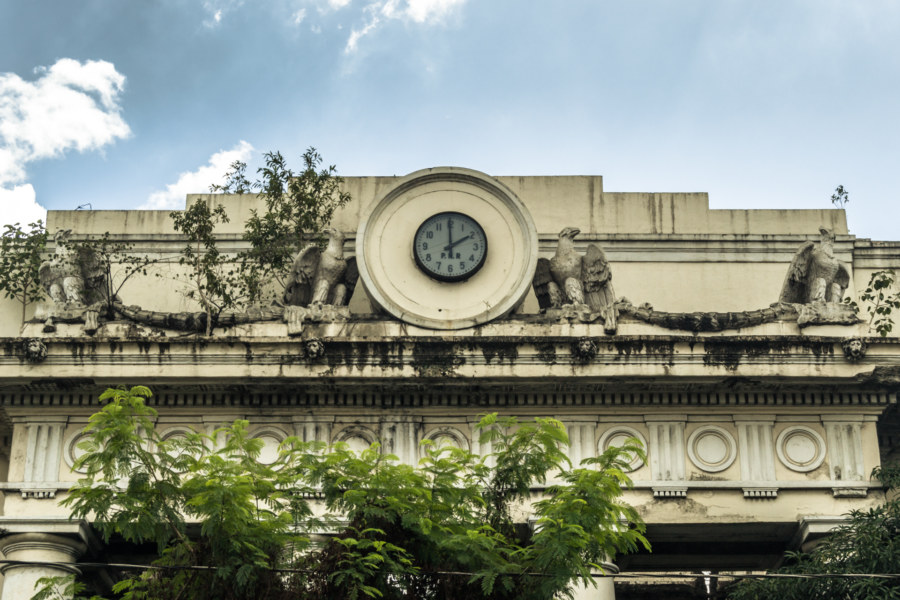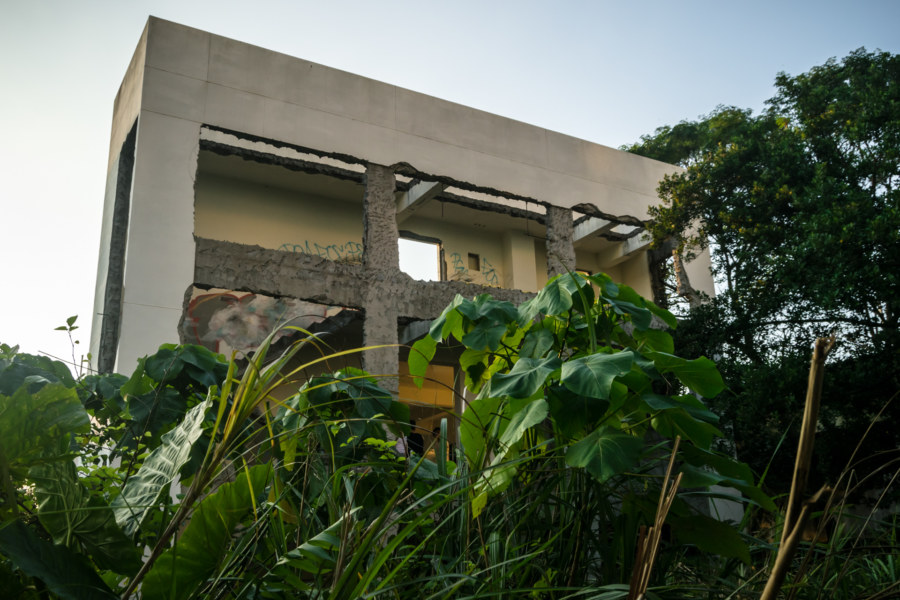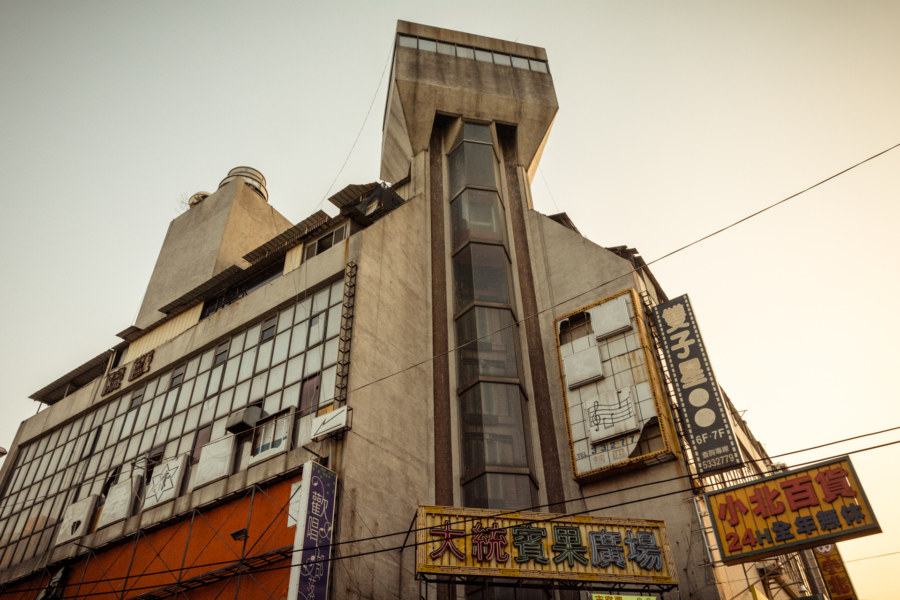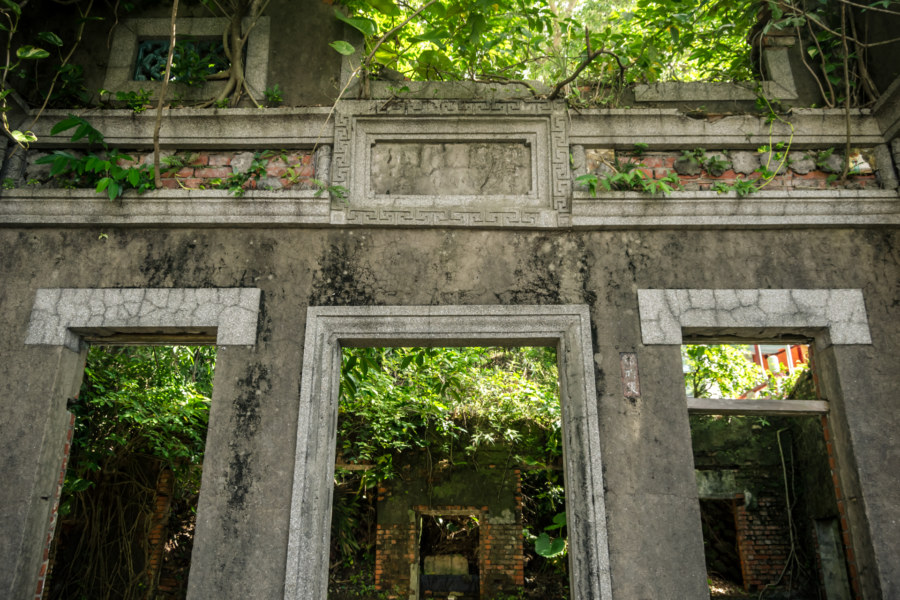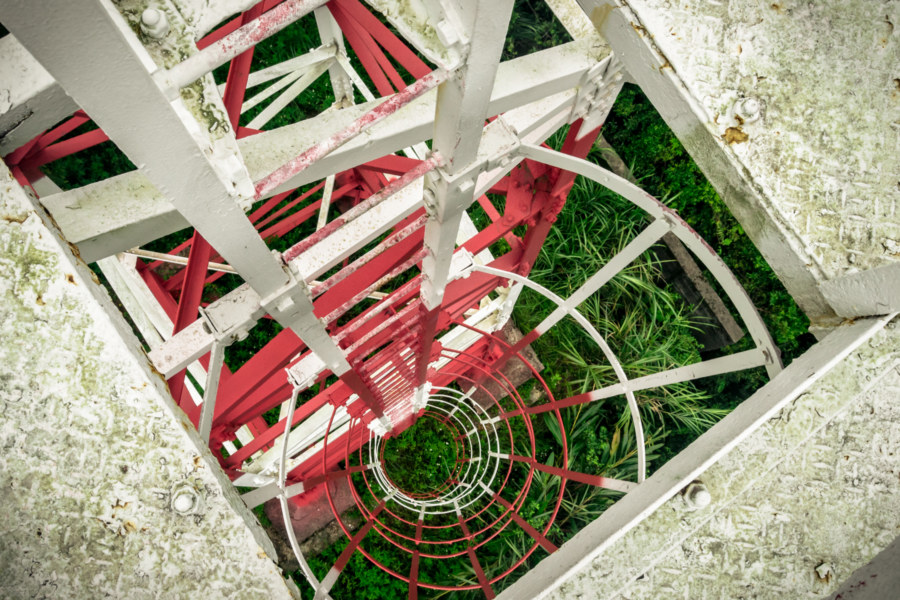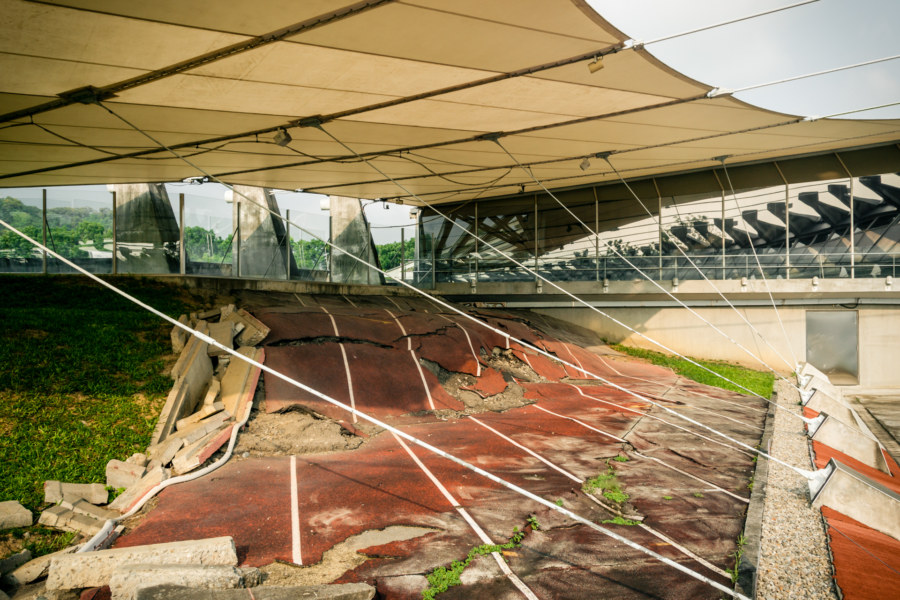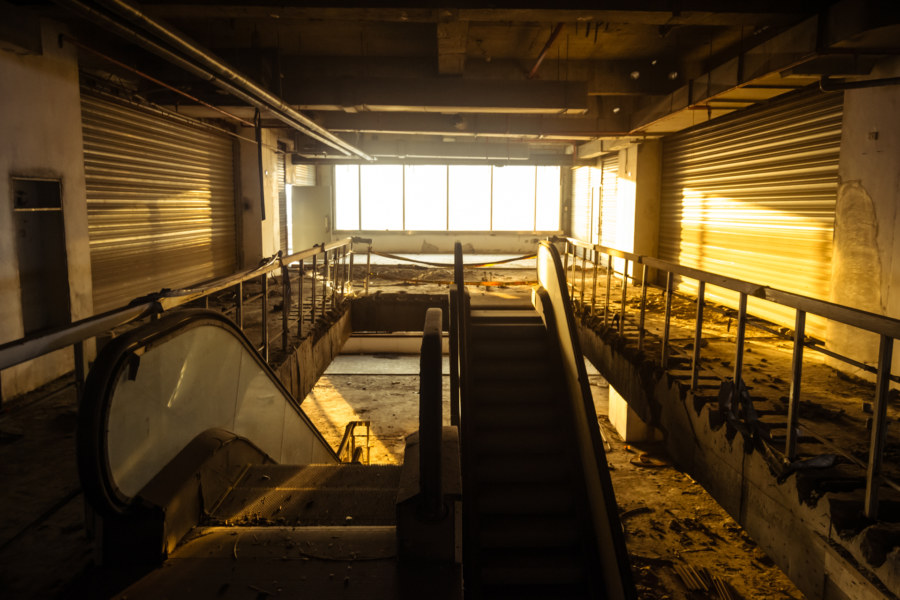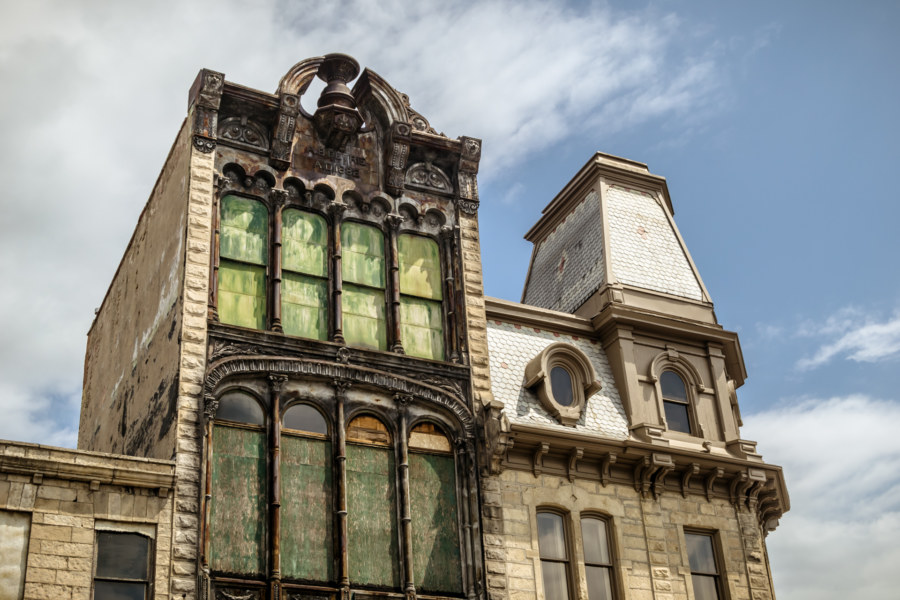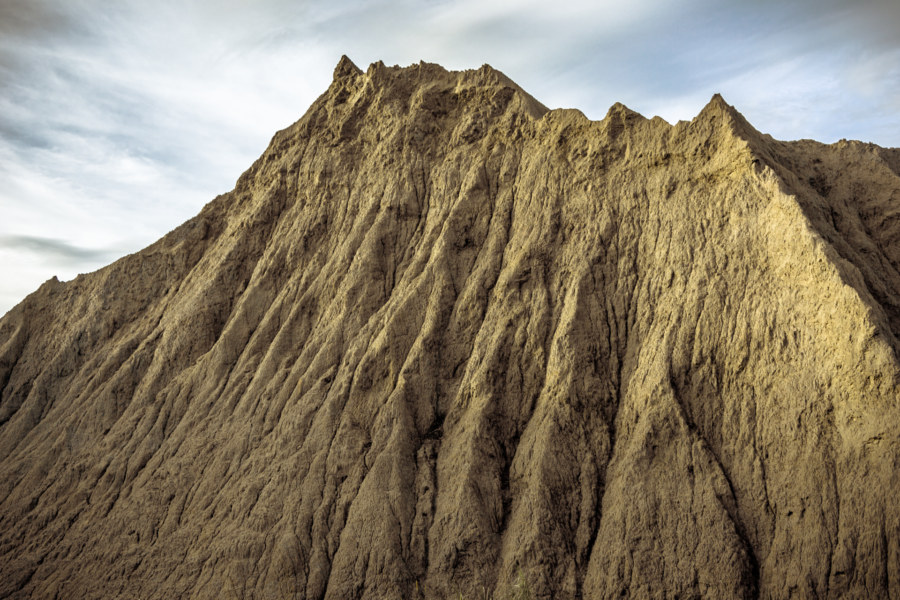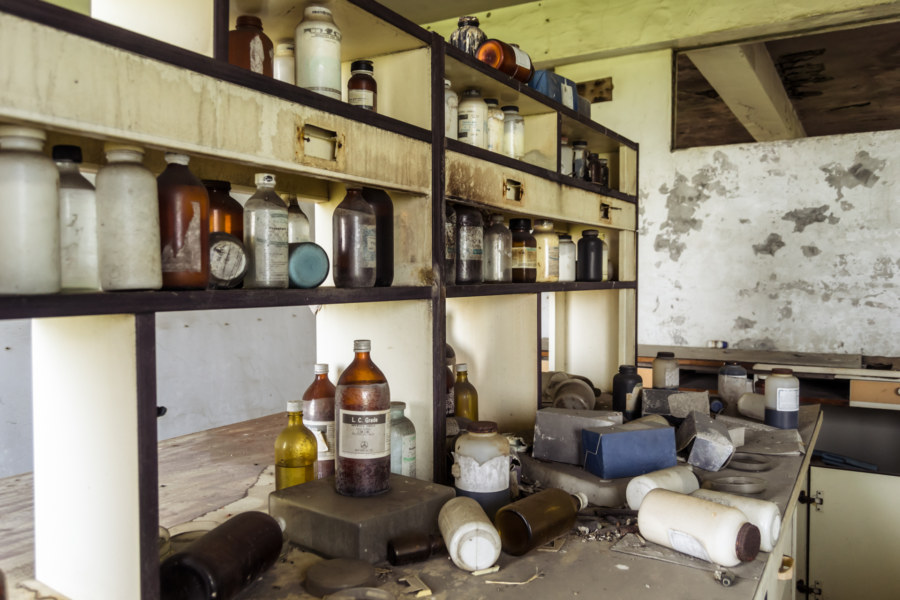Paco Railway Station was built in Paco, Manila, in 1915 during the American colonial period. Designed by William E. Parsons, an American architect mainly known for his work in the Philippines, it remained in service until the mid-1990s when it was partly demolished by a developer intent on building a mall next door. The ruins of that project, never completed, can still be found next to the old station, spreading decay like a cancer through this part of the city.
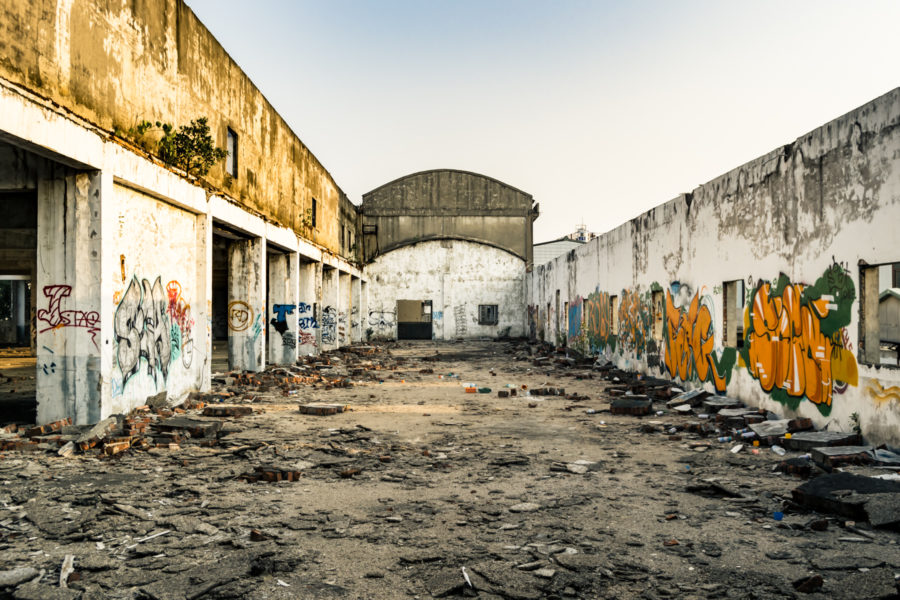
Abandoned buildings and other manmade structures left to the elements. Here I will share the results of various expeditions I have undertaken around the world. See also: urbex, rewilding, and the entire abandoned Taiwan series.
Adjacent Terms
Hongshulin Whiteloft 紅樹林白厝
Yesterday I seized an opportunity to combine two of my passions, the exploration of abandoned places and appreciation of underground electronic music, at a one-off techno party titled The Whiteloft (白厝). From the event description:
The Whiteloft was originally an abandoned villa where only wild dogs go to sleep. Buried deep in silver grass, just alongside the Golden Waterfront of Hongshulin, Taipei, the building hovers the Interzone between metropolis and mangrove jungle. Humdrum pedestrians seem oblivious of this colossal fortress: its skeleton rusted and exposed, leftover building materials strewn astray. Despite its shroud of mangrove leaves, the building appears raw and naked. We tried to find historical records about this building, but found nothing but total blankness, hence the name The Whiteloft.
Douliumen Building 斗六門大樓
While living down in Changhua City last winter I made occasional forays up and down the TRA Western Line 西部幹線 to scope out places not commonly written about in English. One such place is Douliu, the administrative seat of Yunlin, which hardly earns more than a passing mention in the English language blogosphere. It was a worthwhile trip too—apart from the famous Tàipíng Old Street 太平老街 and the surprisingly large and lively Douliu Night Market 斗六夜市 I also chanced upon another abandoned entertainment complex, the Dòuliùmén Building 斗六門大樓, named after an archaic term for the city dating back to the 17th century. This building was also once home to the Shuāngzǐxīng or Gemini Theater 雙子星戲院.
Khoo Tsu-song Old House 許梓桑古厝
Khóo Tsú-song Old House 許梓桑古厝 is a scenic historic site atop a modest hill near Miaokou Night Market 廟口夜市 in Keelung. Built in 1931 while Taiwan was under Japanese rule, it is structured somewhat like a traditional Taiwanese three-sided courtyard home with some Western influences and building materials. Formally named Qìngyú Hall 慶餘堂, it was the residence of Khóo Tsú-song (1874–1945), an important figure in local politics and civic affairs during the Japanese colonial era. His name is rendered here in romanized Taiwanese Hokkien, in keeping with the conventions adopted by the Keelung cultural bureau.
Asia Cement Aerial Tramway 亞泥空中纜車
Yesterday I went out with a friend to explore several abandoned and neglected sites in Hsinchu, Taiwan. Our first stop was one of many mothballed cable car 空中纜車 towers in Guanxi connecting a stone quarry near Yùshān Village 玉山里 (formerly known as Chìkēshān 赤柯山) with a cement plant next to Jiǔzàntóu Station 九讚頭車站 in Hengshan. There seems to be no general agreement about the formal name for the system so I’m picking one of many options and dubbing this the Asia Cement Aerial Tramway 亞泥空中纜車 for the sake of simplicity.
921 Earthquake Museum 九二一地震教育園區
Deep in the night on September 21st, 1999, the devastating 921 Earthquake ripped through central Taiwan. Thousands were killed, hundreds of buildings collapsed, and entire towns were leveled to the ground, particularly in Nantou and Taichung. Nowadays there are many reminders and memorials to the disaster scattered across the region, among them the 921 Earthquake Museum 九二一地震教育園區 (Chinese version; official site) in Wufeng, which I visited in June 2014.
Fuyou Building 富有大樓
At the end of a bicycle trip to Taitung City in the spring of 2015 I went wandering near the old train station, which had been transformed into the Taitung Railway Art Village 台東鐵道藝術村 in 2004. I had a hunch I might find some hulking derelict near former station front, perhaps an entertainment complex or shopping center in terminal decline, for the new Taitung Station is located far outside the downtown core. Sure enough, within minutes I noticed the telltale signs of decay on a large commercial building several streets over from the art village. This turned out to be the Fùyǒu Building 富有大樓, a genuine mosquito museum 蚊子館 built in the early 1990s under shady circumstances. It was later abandoned and has since become an eyesore and public health menace as well as a political hot potato for local officials.
Impressions of Historic Guelph
Exploring the Badlands of Southern Taiwan
The badlands of Taiwan are one of the nation’s most captivating and unusual landscapes. While there are several scattered around the country the most extensive badlands can be found along the hilly borderlands of Tainan and Kaohsiung. Known locally to Taiwanese as “moon worlds” (yuèshìjiè 月世界), these landscapes are composed of weathered mudstone outcrops that erode too quickly for plants to grow.
Peiyuan Industrial Aquaculture Factory 培源殖產工廠
Bicycle touring is one means by which I discover many abandoned places in Taiwan. Ride in just about any direction long enough, keep your eyes peeled, and you’re bound to encounter the telltale signs of decay and neglect sooner or later. Such was the case one fine morning in June 2015 when I set out to have breakfast in Fangliao, a small town along the coast of central Pingtung, while en route to Hengchun, at the southern tip of the island. I had barely been awake for half an hour when I noticed this partially overgrown ruin along the roadside.
